Documentaries
The 40 documentaries that were made under Tirupati Films for Doordarshan on varied subjects are on the sensational Aspects.
1. HUM BHI INSAAN HEIN

This is a film on child labour. Child labour hampers the normal physical, intellectual, emotional and moral development of a child- The hazards of child labour can be classified into physical, genitive, emotional, social and moral.
It has been estimated that the range of incidence of child labour in India is 14 million to about 100 million. India is the largest producer of child labour and illiteracy on this earth.
BONDED CHILD LABOUR
Young children are sold to their employers to pay off family debts. A study undertaken in Kashmir shows that over 80% of child labourers in carpet making work as bonded labours.
Scavenging is the work that faces children with the most extreme risk. As many of them work with bare feet, they get cuts, they are exposed to extreme weather conditions. Sunstroke, pneumonia, influenza and malaria.
Children working in glass factories in Firozabad sit so close as to about 7-8' away from the furnaces burning at 1500-1800 centigrade. Similarly, children working in glass factories race major health hazards like Respiratory Diseases, eye infection and exposure to chemical agents.
2. DAATA KE NAAM
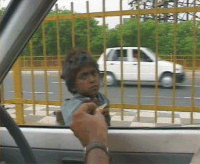
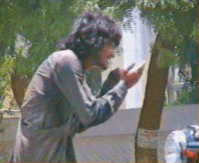
This film focuses the begging problem in India. This problem is so deep rooted that it has become the profession of certain groups in the society.
On being questioned, the simple answer is that why work hard when we earn more by begging. Estimate shows that beggar gets more money in begging than a laborer gets after foiling the whole day. Beggars adopt different slogans for different days, for different people Sometimes in the name of the Almighty, some time children and some time in the name of a good future. Many a people do throw some money to them.
Some beggars flady refuse that they adopt to begging because they run away from hard work. But these are only sham excuses. Beggary is such an intense problem in India not only because of beggars but also because of those who give money to these beggars. The Government should take stria steps against beggars and begging.
3. ITBP INDO TIBETIAN BORDER POLICE

This is a film based on working of the Indo Tibetan Border Police- The Indo Tibetan Border Police force was conceived in 1962 for the security of our frontiers along the Indo Tibetan Border covering 2115 km- from Karakoram Pass to Lipulekh Pass and Trijunction of India, Nepal and China.
The functions and tasks of ITBP include vigil on Northern Borders, detection and prevention of border violation and promotion of sense of security among the local population. It also keeps a check on illegal migration, trans-border smuggling and crimes. Security to sensitive installations, banks and protected persons is another function oflTBP It also restores and preserves order in any area in the event of disturbance.
The soldiers of ITBP who man border posts at altitudes ranging 9000 ft. to 18000 ft, remain cut off by the surface route during the winter month- They face the fury and violence of nature like snow blizzards, avalanches, landslides besides a temperature of 40 degree Celsius.
The force is heavily engaged in fighting Pakistan sponsored terrorism in the state of Jammu and Kashmir where it has displayed exemplary serve and gallantry. Affectionately, called Himveers, they also provide security cover to installations and VIP's in Delhi. They are deployed to peace.
4. GEETA KA UDGAM STHAL - KURUKSHETRA

This is a film on Kurukshetra, the holy place where Lord Krishna chanted the slogans of Geeta to Arjuna.
Kiirukshetra is the land where the righteous king Kuru performed the supreme sacrifice to bring prosperity to the land and his people. Lord Vishnu was pleased with his sacrifice and gave two boons to king Kuru, First was that the land would be known by his name and secondly, anyone who died here, irrespective ofhis sins and virtues would be granted place in heaven.
With passage of time, Kurukshetra came to be visited by Sri Krishna whose very presence and then the discourse on Gita made it holy. King Prithee's prayers. Lord Buddha's visit, halt of Sikh Gurus, sheik Cheli Ka Maqbara and the gardens of Harsha Vardhana have marked the importance and of this town.
Every year the birth of Srimad Bhagwat Gita is celebrated as the Gita Jayanthi. Gita Jayanthi presents Bhagwad Gita recitals "Aarti" and "Deepalan" at Brahma Sarovar, Shloka recital and quiz, 'shobha yatra' ans seminars on the importance of Gita in today's world.
5. NANITAL - THE NAINI LAKE
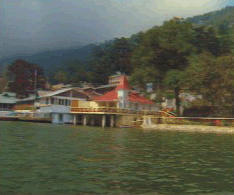
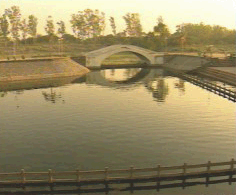
This is a film on pollution in Naini lake, NainitaL Initially there were takes in this area and so it was called Chakla. Now, only a few remain and Naini lake is the most famous of these.
ITie lake derives its name from its shape which is like an eye. It is the most famous boating spot and the tourists seek to boat in the lake during April to June and in September, October.
If s fame and popularity is brining to Nainital not only tourists, but also a lot of population with them. Eatables, poly packs, empty cans and bottles are adding to the debris of the lake. The local Government takes special steps to remove the debris from the lake. Carrying eatables into the premises of the lake in forbidder and so is throwing of waste into the lake. These steps to counter-effect population have been successful upto some extent.
6. PLASTIC SURGERY- A SCIENCE

Plastic surgery is an art and is covered in this documentary. It can be both cosmetic and reconstructive.
Cosmetic surgery is performed to reshape normal structures of the body in order to impose the patient's appearance and self-esteem. Reconstructive surgery is performed on abnormal structures of the body caused by congenital defects, developmental abnormalities, trauma, infection, tumors or disease. It is generally performed to improve body functions, but may also be done to approximate a normal appearance.
Plastic surgery can thus give a whole new look to the patient depending upon the patient's need.
7. SMOKE

This film is on smoking and drugs and was shown on Doordarshan.
Drugs and smoking, both are immensely harmful to the user. Smoking, which often starts off as a pleasurable pastime, becomes a habit and finally an addiction. It can cause many diseases like bronchitis, peptic lungs cancer, emphysema, heart urns etc The quality and longevity of life both get hampered due to smoking. Smoking is so infective that it also affects those people who are often close to smokers. They inhale the smoke and become passive smokes.
Like smoking, taking drugs also begins by seeing others using it and teenagers normally fall into bad habits then. They get so addicted to drugs that life seems horrible without drugs. The outcome drug is take in finally fatal to life. To get rid of this addition, rehabilitation centers are available but can help only if treatment is followed respectively.
8. JAGRITI

This is a film on woman labour. It projects the discriminate between market outcomes of women and men labour in urban India. The wages awarded to a woman is much less while compared to that of a man for the same work.
The security still does not fairly treat a working woman with the justice that it should do. A woman is toiling right from the moment she gets up from bed. She completes her duties at home and prepares herself for work outside. Be it a labour class woman or a office goes, the conditions that she meets are different then those of her men-equals. She is ridiculed, laughed at and sometimes harassed sexually.
It is required that a sense of re-awaking to lighter upto them, so that they could live life like their men counterparts. It should hurt the related family members to work a little for them as they work for man. This "Jagrit" in the society can make life for a working woman much easier and worth Irving
9. RED CROSS

This is a film on working of Red Cross works for Indian Red Cross Society.
The Indian Red Cross Society was established in 1920 under the Indian Red Cross Society Act The President of India is the President of IRCS. The main governing body is the National managing body which consist of 19 members. There are approximately 500 mil time paid staff at National Head Quarters.
The workers of the IRCS are very dedicated and work ultimately for the betterment of man kind. When disasters strikes, relief materials are rushed from the stock held ready and distributed through the network of state and districts branches. Training in disaster preparedness is provided country wide for Red Cross officials, volunteers and selected Government officials.
The IRCS plays an important role in India blood transfusion services. At Head Quarters in Delhi, the society runs the largest voluntary blood transfusion services, collecting 50,000 units in a year and providing blood and blood products to over 1,00,000 beneficiaries, 24 hours a day.
10. MALARIA & DISEASES
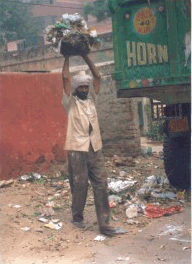
Malaria epidemics tend to occur in areas of unstable malaria, often in semi-arid and highland areas, where communities have little acquired immunity, leading to widespread morbidity and mortality.
Abnormal weather conditions including excessive rainfall, favourable temperatures and humidity.
Major environmental changes including water resources development and irrigation, public works (eg. road construction), wars and natural disasters, population movements.
Interruption of vector control, inadequate therapeutic services, drug resistance Responsibility of organizations to Eliminate Diseases.
National Mobilise funds and resources; ensure adequate drug supply to affected areas; co-ordinate human resources; ensure transport availability and movement of equipment and supplies; establish an efficient information system, inform health authorities, health facilities, communities, media and international partners.
Regional Establish links between national and district levels incorporating tasks from both levels. District Encourage intersectional collaboration, sensitise communities, ensure correct case management; implement vector control activities as appropriate, quantify resources and request funds, ensure efficient and adequate drug supply, co-ordinate placement of human resources, co-ordinate transport and efficient movement of equipment and supplies, liaise with media, establish an efficient monitoring and reporting system.
11. KAHAN LE JAYENGE YUVAON KO
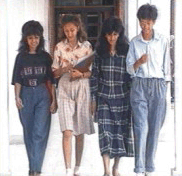
Where today's youth heading towards, it's a tough, crazily competitive world out there, and it seems to have everyone tense and worried - about coping, about getting ahead in lire, about keeping up with the Joneses. And these standard stress triggers appear to be even more acute in the case of those balancing the tightrope teen years.
How do those making the precarious transition from childhood to adulthood, from school to college and the big, bad world outside cope with their growing pains? What are their fears, their aspirations? What is their view of the world outside? An opinion poll conducted among young persons in the age group of 15 to 20 in eight metropolitan cities (New Delhi, Mumbai, Chennai, Calcutta, Bangalore, Ahmadabad, Lucknow and Patna) tried to find a few answers. Seventy-five per cent of the youngsters claimed that the teenage years were a time of stress and anxiety for them-anxiety about exams, jobs, parental expectations, peer pressure, love lives, the need to look good and dress smartly, and well, even the state of the nation. Anxiety about performance in school or college and future job prospects seemed to affect more youngsters in Delhi than anywhere else, perhaps because competitive pressures are the greatest in the capital city. However, parental expectations seemed to be a source of anxiety to youngsters particularly in Ahmadabad and Chennai, maybe because traditional values have a stronger hold on these cities than elsewhere.
12. THE URGE FOR DRUGS AND ALCOHOL

Alcohol is one of the commonly consumed intoxicating substances in India. It has traditionally been drunk in tribal societies, although it has won increasing social acceptance among other groups, urban males being the prime example. It is easily available and widely used, especially at festivals such as Deepawali and Holi. At the moment the use of alcohol is infrequent among women who also tend to resist the habit among male family members.
Between 15 and 20 per cent of Indian people consume alcohol and, over the past twenty years, the number of drinkers has increased from one in 300 to one in 20. According to The Hindustan Times, it is estimated that of these 5 per cent can be classed as alcoholics or alcohol dependent This translates into about five million people addicted to alcohol.
Today in India, the tendency to alcohol consumption has percolated down to the youth. The media has played a leading role in encouraging the use of alcohol among young people by such means as the portrayal of drinking in congenial social settings, by associating the habit with glamour and celebrity status, and by direct and indirect advertising.
Drug abuse is a global phenomenon. It effects almost every country, although its extent and characteristics differ from region to region. Drug abuse trends around the world, especially among youth, have started to converge over the last few decades.
13. RASHTRIYA BHASHA
In so far as language defines a people, we are right to demand that our schools teach our language. But in the context of a country where language is said a change at every seven kosa (miles) Hindi is officially defined as the national language of the Indian Union. However, neither is India a nation nor is Hindi its national language.
India is a family of nations. Each of these nations have their own national language., what is 'our language' and who exactly is 'us'?
The application of the name 'Hindi' or Indian to this modified language was in itself a great mischief, for it implied that the other languages were not Indian or less than Indian. The Caste Hindus railed in getting recognition from the English of Hindi as the 'national language' but with Independence, they very easily forced it into the Constitution With this, Hindustani was killed off and subsumed into Hindi.
It is also important to liberate and uphold the distinct languages of north India that is attempted to be subsumed into Hindi - Rohilkhandi, Hariyanvi, Koyal, Braj, Koshali, Bhojpuri, Bundeli, Bagheli, Maithili, Magadhi, Mewari and Marwari, etc. some of which are really millenia old!
14. DENGUE
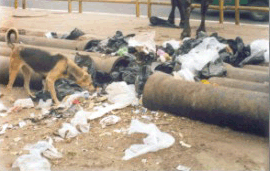
A flu-like illness sometimes complicated by hemorrhage or shock, occurs in India. A large outbreak, including cases of dengue hemorrhagic fever and dengue shock syndrome, occurred in Delhi from August to November 1996- Dengue is transmitted by Aedes mosquitoes, which bite primarily in the daytime and favor densely populated areas, though they oho inhabit rural environments. No vaccine is available at this time.
To Stay Healthy, Do:
# Wash hands often with soap and water.
# Drink only bottled or boiled water, or carbonated (bubbly) drinks in cans or bottles. Avoid tap water, fountain drinks, and ice cubes. If this is not possible, make water safer by BOTH filtering through an "absolute 1-micron or less" filter AND adding iodine tablets to the filtered water. "Absolute 1-micron filters" are found in camping/outdoor supply stores.
# Eat only thoroughly cooked food or fruits and vegetables you have peeled yourself. Remember: boil it, cook it, peel it, or forget it.
# If you are going to visit areas where there is risk for malaria, take your malaria prevention medication before, during, and after travel, as directed. (See your doctor for a prescription.)
# Protect yourself from insects by remaining in well-screened areas, using repellents (applied sparingly at 4-hour intervals) and permethrin-impregnated mosquito nets, and wearing long- sleeved shirts and long pants from dusk through dawn.
# To prevent fungal and parasitic infections, keep feet clean and dry, and do not go barefoot.
The application of the name 'Hindi' or Indian to this modified language was in itself a great mischief, for it implied that the other languages were not Indian or less than Indian. The Caste Hindus railed in getting recognition from the English of Hindi as the 'national language' but with Independence, they very easily forced it into the Constitution With this, Hindustani was killed off and subsumed into Hindi.
It is also important to liberate and uphold the distinct languages of north India that is attempted to be subsumed into Hindi - Rohilkhandi, Hariyanvi, Koyal, Braj, Koshali, Bhojpuri, Bundeli, Bagheli, Maithili, Magadhi, Mewari and Marwari, etc. some of which are really millenia old!
15. BAN ON LOTTERIES ALCOHOL AND DRUGS

INDIA'S three million lottery sellers are staking their last bets on fighting an impending government ban on state-run sweepstakes.
"The ban is anti-people- Three million of us - mostly poor and illiterate - make a living by selling tickets. We also have a large number of dependants," the business person said. The central government wants to outlaw the lotteries, which they see as an addictive social evil that exploits the desperation of the poor to find a quick route to a better lire.
According to trade associations* the government's decision to bring in comprehensive legislation to ban all lotteries will burn a huge million dollar hole in the kitties of various state governments.
The lotteries are strong revenue earners in 15 Indian states. Eleven Indian states phased out lotteries alter a Supreme Court ruling in 1995 banned individuals from running them." Today, the ban is unjustified as the lottery business has been rescued from undesirable elements,'' said Aji Narayanan, member of the Kerala Lottery Union.
Unfazed by this clamor of protest, the central government is asking state legislatures to authorise parliament to ban lotteries. But some say no amount of legislation can curb gambling. Police say there are new forms of gambling surfacing everyday and it is virtually impossible to crack down on illegal bookies.
16. LEGISLATION: ALCOHOL ADVERTISEMENT
The Cable Television Network (Regulation) Amendment Bill, in force September 8, 2000, completely prohibits cigarette and alcohol advertisements. The government controlled channel, Doordarshan, does not broadcast such advertisements but satellite channels however are replete with them.
Drug abuse cuts across age, class, ethnic and gender lines. By working with grass-roots groups, private businesses and other community partners, UNDCP supports projects addressing the needs of specific populations, such as street children and those trying to cope with neglect, violence and sexual abuse. These strategies help disadvantaged groups to avoid high-risk behavior and settings that give rise to a range of problems, including the use of illicit drugs and alcohol.
People with drug abuse problems have different needs. Women, the young, the poor, refugees and ethnic and religious minorities need easier access to early intervention and services. Once in treatment, drug abusers may need job training and referral, assistance in finding housing and reintegrating into society. Drug abusers who commit crimes require alternative treatment in order to break the cycle of drug abuse and crime.
Ministry of Social Justice and Empowerment has been active in this field. In 1985-86 it urged the establishment of a reduction programme. The ministry co-operates with media and youth organizations and collaborates with the Ministry of Health and Family Welfare and with NGOs involved in the problem. The Ministry of Social Justice and Empowerment, in partnership with the United Nations International Drug Control Programme (UNDCP) and the International Labour Organization (HO), has launched three major initiatives for alcohol and drug demand reduction.
17. PATANG KI DOR
For the kite fliers, the sky is the limit. And the intensity of the kite fliers is witnessed only during the Makara Sankrant A feature on kite flying by Anupama.
Come January, the kite flier's fingers itch to hold the 'manjha' and urge the 'patang to take off. Its 'patang baz' season.
Kite-flying has been part of our cultural heritage spanning over 1400 years. But how long will the love with kite last in a society when there are easier means to while away one's time only time will tell.
Makar Sanktanti or Uttarayan is celebrated each year on January 14th. The festival, celebrated as the Kite Flying Day, heralds a change of season marking the movement of the sun into the northern hemisphere. According to mythology it's also a time of religious thanksgiving, as die gods awaken from their slumber. In fact, the kite-flying season begins in the last week of December and continues till the third week of January.
The Indian kites are made of thin paper, the most common shape being an upended square with a triangular tail, framed with bamboo, often with tails. The colours and designs are always lively and beautiful. The kite's bridle is fashioned from the 'manjha' line that the kites are flown on. 'Manjha' is a cotton thread coated with a mixture of ground glass and powdered rice, producing a surface that cuts through opposing lines.

If there was any sport which could be considered a poor man's game it could be nothing, but kite flying. Not only because kites can be had for as little as 50 paise but also viewers delight who watch the enjoy kite-flier's skill. The 16 inches x: 16 inches kites are the most sought after ones preferred by all and sundry but then there are the 25inches ones used for special occasions to hang lamps in the night.
"Our Club has brought national and international honours by participating in several kite flying competition," says Kapadia, who has been a chief judge at the international Kite-Frying Festival held at Ahmedabad every January organised joindy by the Tourism Department, India and Tourism Corporation of Gujarat since 1989.
The kite-flying centres in India are located in the cow belt like Bareilly, Almora, Allahabad, Delhi, Jaipur and others. Gujarat has had along tradition of kite flying and Ahmedabad happens to have the country's only kite museum. Calcuttans too are keen kite-flyers and during the Durga Puja the All India Gold Cup contest are held.
18. SUCCESS OF FAMILY WELFARE PROGRAMME

India is reorienting its National Family Welfare Programme away from a target-driven approach and towards a service-oriented one that emphasizes improved quality of care. At the same time, contraceptive use would be expanded and the quality of reproductive health services improved. The Government has begun to implement this new policy in all states. In an effort to improve the quality of services provided, the Government is also focusing on training and on improved collaboration with non-governmental organizations (NGOs) and international agencies.
In the State of Himachal Pradesh, a UNFPA project is helping the government train medical officers at the primary health centers level to improve the quality of ramify planning services.
19. AIDS PREVENTION

AIDS cases in India will soon reach epidemic proportions unless prevention programs continue and expand.
The Indian Committee of Youth Organization (ICYO) is a non-profit, non-governmental organization committed to developing mutual cooperation and understanding among the different voluntary youth agencies, organizations, associations, groups and clubs that function in India- The objective of ICYO is to strengthen the existing youth agencies and foster the development of new agencies in the areas of youth mobilization for environmental preservation, rural community development, health, population, and cultural and national development.
Concerned with the threat of AIDS to young people, ICYO started campaigning to sensitize and mobilize people to implement AIDS prevention programmes in October 1987- The World Assembly of Youth (WAY) had at that time involved a number of youth organizations in the public debate on drug abuse prevention, AIDS was then not a topic for open discussion in India.
Recognizing mat the participation of youth was essential for preventing the spread of HIV/AIDS, an intercountry workshop was organized in collaboration with the World Health Organization and WAY for the South and South-East Asian region. Doctors, researchers, social workers and youth workers discussed the need to develop strategies for combating the epidemic of HIV/AIDS.
When the first case of HIV was discovered in Chennai in 1986, the Indian Government responded to the HIV epidemic immediately. Recognizing the seriousness of the situation, the Government constituted a high powered committee under the Ministry of Health and Welfare. Subsequently, a National AIDS control Programme was launched in 1987. The program activities covered surveillance, screening blood and blood products and health education.
For India to respond effectively to infection trends and limit the costly social and economic impact of HIV and AIDS, its efforts need to be accelerated, intensified and expanded while the country remains at a low prevalence of HIV and there is still time to slow the spread of the epidemic. While HIV prevalence doubling every one to two years in certain groups, there is still a narrow window of opportunity over the next few years in which to prevent the HIV epidemic from becoming generalized and much harder to control.
The Indian Government and individual state Governments have launched prevention programs to reduce high-risk sex and, there is evidence that in some states these programs are resulting in safer behavior. There are some success stories for effective prevention and control of HIV infection. An intervention program among commercial sex workers in Sonagachi, Calcutta has been able to increase condom use from 0% in 1992 to more than 70% in 1992-1994 and sustained this at over 70% until 1998. If current prevention efforts can be scaled up and sustained, India may be able to bring down the rates of HIV infection in particularly exposed groups and avert a widespread heterosexual epidemic.
20. MARRIAGE AGE

NUPTIALTTY plays a significant role in determining the level of fertility and growth rate in a population. The experience of several less developed countries where population growth rates have recently lowered has well demonstrated this effect. An upward shift in nuptiality behavior has played a crucial role in affecting these changes. In societies where reproduction is primarily confined within marriage the changes in marriage ages and the resultant reduction in proportion of women remaining in married state are directly linked to fertility. Raising of female age at marriage has therefore been recognized as one of the important policy interventions that might be able to influence population growth rates apart from national family planning programme.
In India the impact of persisting low ages at marriage in maintaining the high fertility and high growth rate of Indian population is now well recognized. Though age at marriage of females in India has been rising slowly since around the middle of this century the current level is low in comparison to most of the low fertility countries. Further there is lot of variation in the age at marriage among the states especially between the northern and southern states, and within states among castes communities and across other social strafications.
21. BANKE OF DUDHWA

Dudwa has also the ideal kind of terrain for the Indian Rhino. Once found here in large numbers, they had been hunted down and had completely disappeared from this area by 1878. More lately, it was feared that epidemics and disease would wipe out the existing populations of rhino in Assam, West Bengal and Nepal and a decision was taken to distribute some in other suitable areas.
In an exciting experiment, one male and five female rhinos were relocated here from Assam and Nepal, in 1985.Nowwellsetded in Dudwa, their numbers have increased. At present, tourists are not allowed in the rhino area.
22. SARISKA

Once the hunting reserve of The Maharaja's of Alwar in whose jurisdiction it fell, Sariska's forest are typical of the Aravalti with their undulating terrain of low hills, steep escarpments, wild valleys and hill plato. A natural habitat for the tiger, it could have held a commendable population of these tigers had the forest around the park not being vandalized in the recent decade. Today the region is a major milk pocket and cattle have eroded the forest lands and pastures around the park. Human population and resence of the religious spots around and inside the park have further lead to the deterioration of environment.
Sariska is a heavily forested reserve and derived through the park shows up a large number of deer species (Sambhar, Cheetal & Nil gai) as well as Langoors that inhabit the tree covers there is also a variety of bird life in Sariska that includes the gray partridge, golden wood pecker, great Indian horn own.
23. WATER PROBLEM IN KUMAON
Kumaon Hills, with their tree-topped ridges, snow clad peaks, rippling streams and mountain lakes, have been a haven of refuge since time immemorial. Kumaon is also rich in pilgrim centers, The Katyuri Dynasty constructed about 400 temples in the Almora district. The beauty and grandeur of these ancient temples can only be compared to the wave of temples built by Chalukyans in the South of India in the beginning of seventh century.
Ironically, some of the leaders of the movement say, there was no such problem in the hills earlier and villagers used to draw water for their requirement from the natural springs, but after the introduction of the Water Act for Kumaon and Garhwal, the ownership rights of the village samitis were taken away. These rights were protected under Kumaon-Uttarakahnd Act, 1950. "The problems was made worse by faulty water-supply schemes through the installation of pipes and drying up of natural resources," says Sudha Kaptiyal, another officer-bearer of movement.
24. EDUCATION PROBLEMS IN KUMAON
Education was one of the first and foremost programmes of RLEK initiated with the Van Gujjar community. In the past, because of their nomadic lifestyle and the fact that the community resided in deep forest areas, the Van Gujjars had been deprived of the benefits of any of the educational programmes of the government. The fact that the community migrates to the higher Himalayas for six months in a year was seen an in impending factor to the initiatives. RLEK therefore came up with an innovative education programme wherein the teacher volunteers of the organization in tact migrated with the community members to the highlands and continued the education programmes. The Van Gujjar community looked upon these volunteers as family members and the volunteers in turn helped the families in their day-to-day chores and within a short span of time the programme made significant progress.
25. RANTHAMBORE

Near the township of Sawai Madhopur, in the state of Raj as than, Ranthambore National Park is an outstanding example of Project Tiger's efforts at conservation in the country. The forests around the Ranthambore Fort were once, the private hunting grounds of the Maharajas of Jaipur. The desire to preserve the game in these forests for sport, was responsible for their conservation, and subsequent rescue by Project Tiger. In 1972, it was estimated, that there were around 1927 tigers in India, of which Rajasthan had 74, and the number of big cats in Ranthambore Sanctuary was 14. 1972 was also the year that Project Tiger was launched, and this sanctuary was taken into its wings, along with seven other sanctuaries arid national parks.
The Park sprawls over an estimated area of 400 sq kms. Steep crags embrace a network of lakes and rivers, and atop one of these hills, is the impressive Ranthambore Fort, built in the 10th century.
Strategically built on the border of Rajasthan and Malwa, the fort houses some splendid monuments, within its precincts. The terrain fluctuates between impregnable forests and open bushland. The forest is the typically dry deciduous type, with dhok, being the most prominent tree.
The entry point to the Park, goes straight to the foot of the fort and the forest rest house, Jogi Mahal.
The latter boasts of the second-largest banyan tree in India. The Padam Talab, the Raj Bagh Talab and the Milak Talab arc some of the lakes in the area, that attract the tiger population .They have been spotted at the edges of these lakes, and Jogi Mahal itself Old crumbling walls, ruined pavilions, wells, and other ancient structures stand witness to the region's glorious past. The entire forest is peppered with the battlements and spillovers of the Ranthambore fort - tigers are said to frequent these ruins, too.
The park is best explored through jeeps, which are available on hire.
26. WOMEN UPLIFTMENT

Crime against women is a global phenomenon. Although women contribute nearly half of the human resources of the world, yet, violence and crime against women are increasing every year, whether at home, at work, on the street, or elsewhere.
Violence against women is rooted in the tradition of discrimination that has been going on for centuries. Discriminatory family laws, segregation in society, gender bias in a patriarchal society, discrimination at work, psychological and physical weakness due to years of malnutrition, family violence and other such facts, have forced women to put up with such crimes.
Even though the constitution deems women in India to be equal to men, this equality is between unequal. In fact, the alarming increase in crime rate against women had prompted Justice Markandey Katju of Allahabad High Court to recommend that a law be created for public hanging in cases involving serious crimes against women.
Despite several laws and regulations being passed to uplift the status of women, in general, women are still regarded as second - class citizens and are discriminated against on various grounds.
Several suggestions can be put forward to uplift the status of women, in general. First, women should be educated. Education will broaden their outlook and make them aware of their rights, responsibilities and duties in society. Also, women should be encouraged to be economically independent. Last, but not the least, there should be a general awareness of women's problems and the growth of women's organizations should be encouraged.
Women are making efforts round the world to see that their rights are respected, their voices heeded, their opportunities widened. The " voice from the kitchen" is being heard in International forums. Women deserve esteem, respect and love, not only as individual's but also as "symbols of reverence, creation and values", which are spiritual and aesthetic.
27. Jaisamand Lake of Rajasthan

Location: 50-km From Udaipur, Rajasthan
Tourist Attractions: Jaisamand Wildlife Sanctuary, Jaisamand Lake.
Best Time To Visit: November To January.
Jaisamand Sanctuary is situated 50-km south of Udaipur. the picturesque 'City of Lakes', succulent valleys and hills. It is on the bank of jaisamand Lake, the second largest artificial Lake in Asia. The sanctuary extends over an area of 52-sq-kms of thick forest land. Established in 1957, this sanctuary is located besides the man-made lake by the same name. Covering a total area of 160-sq-kms, it harbours sloth bear, leopard, chital, chinkara, wild boar and a number of birds. Some crocodiles and fish can also be spotted here.
It was built by Maharaja Jai Singh, who on its inauguration on 2nd June 1691 AD, walked around it distributing gold equal to his own weight in charity. He built six 'Chhatris' (cenotaphs) with finely embroidered elephants in front and the temple of Lord Shiva in the centre of the embankment.
Jaisamand Island Resort is situated in the midst of the largest man-made lake in Asia. Jaisamand Lake provides a panoramic view of the picturesque surrounding. The unbelievable vastness of the lake ringed with the undulating Aravallis transports one into a world of kaleidoscopic, natural beauty.
28. ISI THE MARK OF QUALITY

There are many consumers like them who get amazed when they encounter such a situation. The ISI is affixed on a product brand licensed to be manufactured at a particular unit. The same branded product, manufactured at a different place, may not be licensed under the marking scheme. Thus, the product manufactured at the licensed unit would have ISI mark and the other one would not have such a mark. Likewise, the Directorate of Marketing and Inspection, Ministry of Agriculture, allows a dual system of labeling, with and without the Agmark seal of quality.
So, despite the fact that many products bear the ISI mark and Agmark, the very labeling is quite faulty and does not have any consistent guarantee. Worse, there have been instances when products carrying ISI mark have failed to meet the BIS requirements. In 1997, the Consumer Guidance Society of lndia (CGSI) in a study found that 17 out of 25 samples of domestic electric irons had a ISI mark but did not comply the BIS stipulations.
Comparative testing of consumer products is done by only three organizations in India. Apart from CGSI, Consumer Education and Research Society, Ahmedabad and VOICE, Delhi carry these tests. Twenty three years back, CGSI tested the domestic pressure stoves and found that two-thirds of them failed to meet the safety standards. It was because of CGSI tests that the ISI mark on pressure stoves became compulsory Again, the government passed the Household Electrical Appliances (Quality Control) Order 1981 after electrical appliances and fittings were found far below BIS parameters.
It is to be noted that a product with ISI mark is supposed to be produced under a well-defined scheme of testing and inspection provided by Bureau of Indian Standards (BIS). If there is any defect or flaw in the BIS-certified product, a consumer can contact the nearest BIS office and lodge his complaint. BIS has an entire system to look after the grievances. It has a redressal machinery wherein the defective product can be replaced. Similarly, as far as the Agmark goes, there is a provision for free replacement if the complaint Is genuine.
Just remember that you have to keep the faulty product and its packing in safe custody till a BIS inspector officer comes to test it.
29. RAJASMAND LAKE OF RAJASTHAN

Sixty-five kms from Udaipur, the serene and little town of Rajsamand offers the most beaudful lake in Rajasthan. There are beautiful 'torahs', gardens and carved 'chartist' spread around the lake. The sunset at the lake is absolutely splendid and is sure to leave any onlooker spellbound.
Close to Bankroll is the dam built by Maharani Raj Singh in 1660 AD. Many embellishing arches and magnificent 'chhatris' adorn the embankment. Sixty-five kms from Udaipur. it is arguably the most beautiful lake in Rajasthan. There are beautiful 'torans', gardens and carved 'chhatris' around the lake. The sunset at the lake is absolutely splendid.
It is the royal lake, offering a spectacular view of the sunset, with artistic "torans" and "chhatris" adorning its embankment.
30. POPULATION AND BIRTH CONTROL
India has the second largest population in the world, exceeded only by that of China. Yet, despite India's many large cities, the country is still overwhelmingly rural.
31. RAFTING
The challenge of the daunting, turbulent rivers is no less, than that of the rugged mountains. The icy heights of the Himalayas, are the source of some of India's mighty rivers.
Fed by innumerable streams, they race along tortuous boulder strewn beds, cutting deep gorges, and breaking into silvery white rapids.
An intricate network of thundering mountain rivers, flowing through an amazing landscape of thrilling gorges, forests, and remote villages, the Garhwal and Kumaon hills, in the state of Uttranchal Pradesh, provide ideal settings for some dramatic water adventrure.
32. BEAR TAMERS
This is a short film on "Madaris".
33. CALL OF A KING
The Indian Lion is another name for the Asiatic lion, Panthera leo persica, the sub-species that once ranged from Greece to central India. This animal has played a major part in the symbols and folklore of Indian culture for over 2000 years.
The Asiatic lion has long been celebrated as Lord of Beasts, and it became a symbol for human power and sovereignty. In ancient societies in India, to fight with a lion was considered to be the ultimate test of leadership. This gradually shifted to a somewhat safer, more symbolic gesture of a leader clothing himself in or standing on a lion skin. There were magnificent depictions of lions amongst the statues at Mahabalipuram. The most important use of the lion as a symbol of power and strength was associated with the Emperor Asoka in Sarnath, 2000 years ago. This depiction of a lion eventually became the symbol for the modern Republic of India.
As India's population grew and began cultivating or settling more and more of its forest and scrublands, the Asiatic lion was squeezed nearly out of existence. Early this century the Gir Forest area in the state of Gujarat on the west coast was afflicted with a terrible famine brought on by a severe drought: one so devastating that it is still mentioned in the folklore of the region. Because of the strained circumstances, the lion population began preying on the human population in the area. This prompted a massive backlash against the lions, resulting in a catastrophic decline in their population. In 1910 there were reported to be fewer than two dozen lions left in the wild although this low figure may have been publicized to discourage lion hunting - census data from the time indicated the population was probably closer to 100.
Before they were completely wiped out, the lions came under the protection of the Nawab of Junagadh, a local monarch, who banned all lion hunting in the area. Soon, the lion population began to rise in number. By the declaration of Indian independence in 1947, the government had come to realize the importance and fragile nature of this last bastion of the Asiatic lion, and the Nawab's conversation policy was upheld. Naturalists were assigned to study and take a census of the Gir's lion population. At that time there were around 200 lions.
Asiatic lions are slightly smaller that their African cousins, although the largest Asiatic lion on record was an imposing 2.9 m in length. Though they have a less well developed mane, Asiatic lions have thicker elbows tufts and a longer tail tuft.
At the present time the Gir National Park and Lion Sanctuary is the only place to see Asiatic lions in the wild, and the Indian government has begun to do more to make this unique spectacle visible to tourists and wildlife enthusiasts. Guided jeep safaris through the Gir are available for observing lions. Because the lions are not afraid of people or vehicles these safaris can offer very intimate views of the animals. Sometimes lions will actually approach and look over a vehicle in their midst.
34. ENVIRONMENT
A film on wild life and environment protection.
35. SCHOOL ADMISSION PROBLEMS
This short film focusses on the various school admission problems.
36. MUSHROOMING OF PRIVATE AND PROFESSIONAL INSTITUTES
With the number of Institutes mushrooming, the validity of the courses running by these private institutes are doubtful.
Simultaneously the growing number of these professional institutes enables an individual to pursue such studies on the basis of high investment.